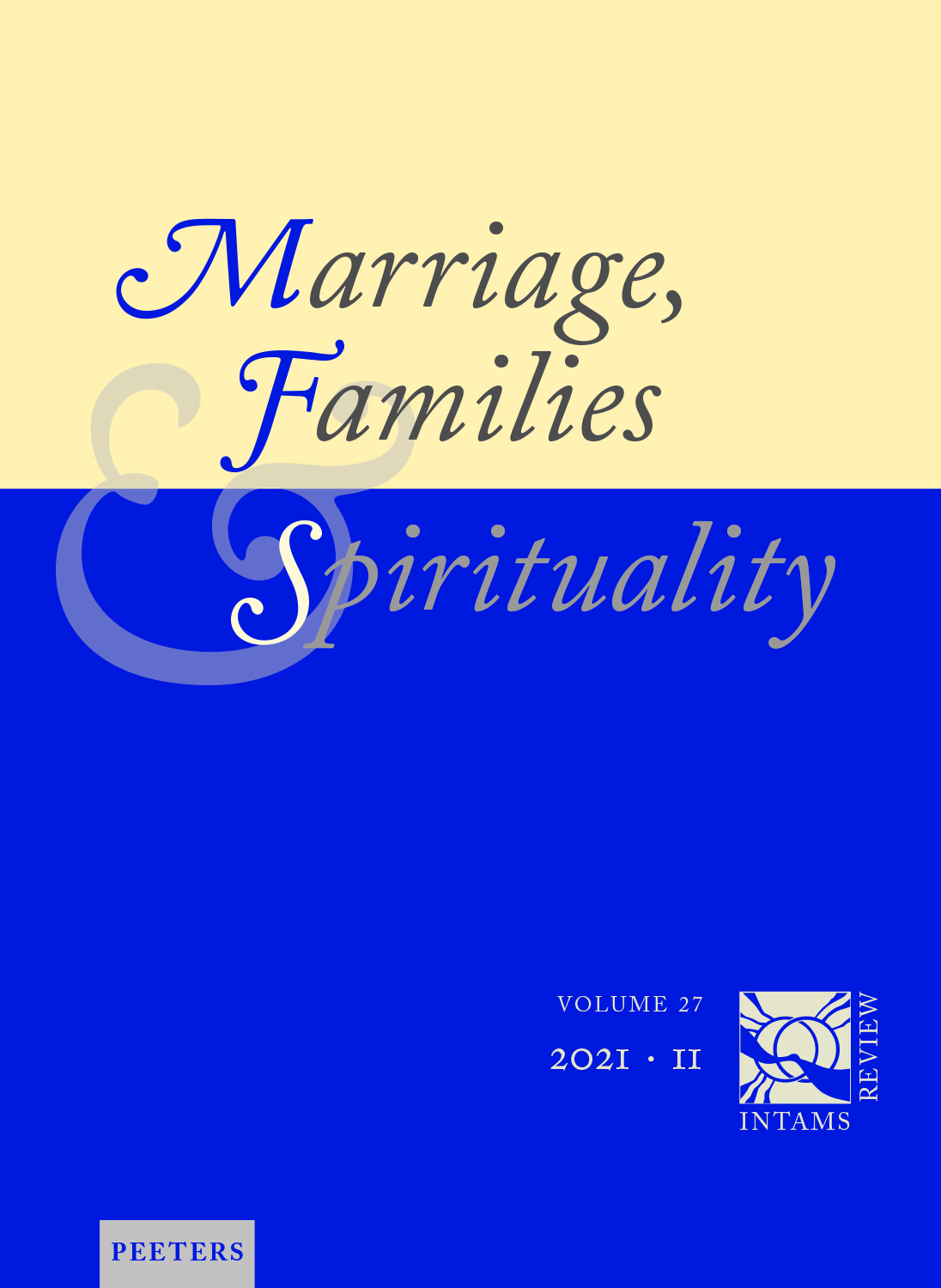 previous article in this issue previous article in this issue | next article in this issue  |

Preview first page |
Document Details : Title: Unidualità antropologica e coniugalità Author(s): DI NICOLA, Giulia Paola , DANESE, Attilio Journal: Marriage, Families & Spirituality Volume: 4 Issue: 1 Date: Spring 1998 Pages: 7-19 DOI: 10.2143/INT.4.1.2014775 Abstract : Marriage and the uni-duality of man In relation to the traditional predominantly male-inspired picture of man and the sexes, radical feminism has gone out of its way to stress the conflictuality of the relations between the sexes. More recently however there has been a move beyond this hostile stance with the development of a reciprocity model which looks at relations between woman and man both from the point of view of equality and from that of diversity, thereby according the needful respect of both sexes. “He made them in His own image, He made them man and woman” – this verse from Genesis to which Jesus referred with regard to marriage is the foundation for a Christian understanding of what it is to be a woman and what it is to be a man. It shows us how woman and man fit both for themselves and as a couple into the creation plan of God. This reference back to God which underlies the reciprocity model emphasis the significance of the transcendence which guarantees that I and you do not destroy ourselves in strife or in fusion. In the reciprocity model care for the other comes before “definition” of the other, readiness for self-criticism before universalistic and static concepts of identity, lived fidelity and a constant preparedness for renewal before blind adhesion to traditions or institutions. The reciprocity model also involves a particular ethos. It does not first and foremost imply a moral catalogue of norms but rather a way of life which aims for harmony with our deepest human strivings. Concretely it involves the three poles of selfrespect, a responsible attitude to the others and commitment to just structures. Concern for justice and respect ensure above all that the marriage relationship not only affects the wider circle of friends but indirectly involves each and every person, insofar as it allows to all the right to a human environment and a family. As a result of a whole variety of discoveries in the human sciences and also of a theological reevaluation of corporeality and a deeper understanding of the Incarnation, Christian theology has given a particular emphasis to the value of sexuality in this century. It has also accorded to marriage as a community of life and love between woman and man a new spiritual value which is no longer reducible either to romantic feelings or to reproductive ends. The assumption now is that married couples have rather to make God present to each other. There has also been a development in the cognitive behaviour of marriage partners. Starting with the different life stories that mark out separate identities, woman and man face each other in dialogue and have to learn to accept each other mutually, to listen to each other and where necessary to modify their own discourse in view of the different hermeneutic of their partner. To accept differences in this way requires attentiveness, a readiness for dialogue, and love; it is the lifelong struggle to find unity as a couple. And therein lies its pioneer and exemplary role for society as whole. |
 |


